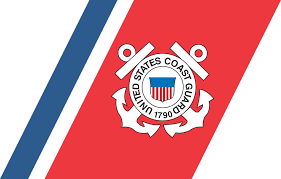Lower Mississippi River (LMR) Dredging Update 101819
LMR Dredging Update 101819.pdf
The Corps of Engineers Mississippi Valley New Orleans (MVN) continues dredging operations in response to record shoaling deposited by historic long-term high river stages (record flood event created by record precipitation levels). The MVN continues to concentrate efforts on the Crossings Above New Orleans as the channel in Southwest Pass has mostly been restored. Two dustpan dredges and one hopper dredge continue working on the Crossings and one cutterhead dredge continues working on the channel in Southwest Pass.
DUSTPAN DREDGE(S) ON THE CROSSINGS ABOVE NEW ORLEANS:
WALLCE McGEORGE: The industry dustpan dredge WALLCE McGEORGE has completed the assignment at Baton Rouge Front (Mile 231 Above Head of Passes [AHP]) and is expected to start dredging full channel dimensions (500 feet by 45 feet) at Alhambra Crossing (Mile 192 AHP) tonight. The industry dustpan dredge commenced dredging on the Crossings on May 9, 2019.
While the WALLACE McGEORGE is dredging at Alhambra Crossing the White Castle Anchorage (Mile 191.1 AHP to Mile 190.4 AHP) will be off limits for vessel usage. The NOBRA and Federal Pilots intend to keep the White Castle Anchorage cleared of vessels until dredging operations are completed.
JADWIN: The Corps dustpan dredge continues dredging full channel dimensions at Belmont Crossing (Mile 154 AHP). The government dustpan dredge returned to dredging on the Crossings on September 13, 2019 after completing a temporary assignment on the shallow-draft channel.
HURLEY: The Corps dustpan dredge HURLEY is expected to resume dredging full channel dimensions at Red Eye Crossing (Mile 224 AHP) by this Sunday (0ctober 20, 2019). The dustpan was released on October 3, 2019 from Red Eye Crossing to work on a temporary shallow-draft assignment at Victoria Bend (Mile 594 AHP). The government dustpan dredge commenced dredging on the Crossings on May 4, 2019.
HOPPER DREDGE(S) ON THE CROSSINGS ABOVE NEW ORLEANS:
NEWPORT: The industry hopper dredge NEWPORT (Manson Construction) continues working the central 250 feet of channel at two locations: Missouri Bend (Mile 222 AHP) during daylight hours and alternating to Sardine Point (Mile 219 AHP) from dusk to dawn. The NEWPORT is dredging under Southwest Pass Hopper Dredge Rental Contract #8-2019 and is expected to remain on the Ship Channel until mid-November (2019).
CUTTERHEAD DREDGE(S) IN SOUTHWEST PASS (SWP):
C.R. McCASKILL: Weeks Marine’s cutterhead dredge C.R. McCASKILL began dredging the assignment from Cubits Gap (Mile 3.5 AHP) to the Head of Passes (Mile 0) at 0700 hours on October 15th on the western side of the channel. The cutterhead began dredging on July 24, 2019 under Southwest Pass Cutterhead Dredge Rental Contract #2-2019.
CUTTERHEAD DREDGE(S) IN THE HOPPER DREDGE DISPOSAL AREA (HDDA):
R.S. WEEKS: The industry cutterhead dredge R.S. WEEKS (Weeks Marine) continues dredging at the HDDA, all material is being beneficially used in the Pass A’Loutre Wildlife Management Area (PALWMA). The MVN was recently able to extend this contract, the original contract was to remove 12 million cubic yards (mcy) of material from the HDDA. An increase in funding was utilized to extend this contract and increase the amount of material to be removed by approximately 3.0 mcy, increasing the contract to remove a total of 15.3 mcy of material. The cutterhead dredges have now beneficially utilized more than 9.5 mcy of material from the HDDA and restored approximately 500 acres in the PALWMA.
The Carrollton Gauge (New Orleans) reading at 1200 hours today was 7.99 feet, with a 24-hour change of + 0.34 feet.
The Baton Rouge reading at 0800 hours today was 22.39 feet, with a 24-hour change of + 0.31 feet.
The graph below is reproduced from NOAA’s National Weather Service website and represents an experimental product to account for the complexity of accurately predicting long-range precipitation. This forecast projects stage levels based on expected precipitation for 2 days (top) and 16 days (bottom) and was developed within the North American Ensemble Forecast System (NAEFS) computer model and highlights Quantitative Precipitation Forecasts (QPF). Along with the forecasts, a shaded area is also provided to indicate uncertainty for the forecast each day in the future. These plots are experimental and not an official forecast product.



